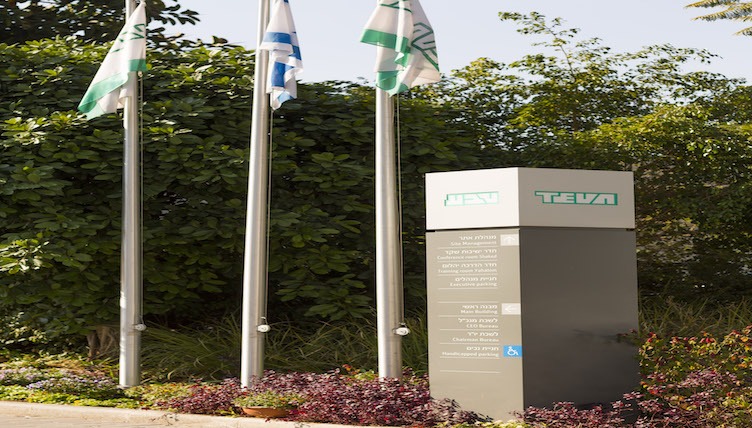What is Next for Teva?
Teva Pharmaceutical Industries announced this week that its current chief executive, Erez Vigodman, was stepping down immediately and would be replaced on an interim basis by Chairman Yitzhak Peterburg. So what may lie ahead for Teva?
The change in leadership comes as Teva proceeds with integrating one of its largest acquisitions, the $40.5-billion acquisition of the generics business of Allergan and faces generic competition for its top-selling specialty drug.
Making change
Teva Pharmaceutical Industries announced this week that it has appointed Dr. Yitzhak Peterburg as interim president and chief executive officer (CEO), effective immediately, following a mutual agreement between Teva’s board and Erez Vigodman, who is stepping down as president and CEO. Mr. Vigodman’s service on the Teva board of directors has also ended.
Dr. Peterburg has served as chairman of the Teva board of directors since January 2015 but stepped down from that role in order to serve as interim CEO. Teva’s board of directors is undertaking a search to identify a permanent CEO.
Prior to rejoining Teva’s board of directors in 2012, Dr. Peterburg led Teva’s research and development as Teva’s group vice president, Global Branded Products, from October 2010 to October 2011 after serving on Teva’s board of directors from 2009 to July 2010. Previously, he served as president and CEO of Cellcom Israel, a telecommunications company, from 2003 to 2005; director general of Clalit Health Services, a healthcare provider in Israel, from 1997 to 2002; and CEO of Soroka University Medical Center, Beer-Sheva, from 1995 to 1997. Dr. Peterburg currently serves as a director on the board of Rosetta Genomics and is also the chairman of Regenera Pharma, a Phase III clinical-stage pharmaceutical startup company.
The Teva board has elected Dr. Sol J. Barer, a member of the board since January 2015, as the new chairman of the Teva board of directors. Dr. Barer was a founder of the biotechnology group at Celanese, later spun off as Celgene, where he served in top leadership roles from 1987 to 2011, including as chairman and CEO from 2007 to 2010. Previously Dr. Barer was appointed president in 1993 and chief operating officer in 1994 before assuming the CEO position.
What lies ahead
As Teva begins a search for a new CEO, what would a new CEO face? Teva, which will report its 2016 results next week, is coming off a year that featured the completion of one of the largest acquisitions in the company’s history: the $40.5- billion acquisition of the generics business of Allergan. The deal, a friendly acquisition, was completed in August 2016 and announced in November 2015 following Teva’s decision to terminate an acquisition of Mylan in 2015. In acquiring Allergan Generics, Teva strengthened its already strong generics portfolio. At the time of the announced acquisition, Allergan’s generics pipeline had approximately 230 abbreviated new drug applications pending at the US Food and Drug Administration (FDA), including approximately 70 first-to-file applications, as well as nearly 1,000 marketing authorization applications filed outside of the US, according to company information. Teva says it expects to achieve $1.4 billion in net deal-related synergies and tax savings by 2019.
Generics are the largest segment for Teva, accounting for more than half of the company’s total revenues. In an investor presentation in January 2017, Teva estimated total revenues of $21.6 billion to $21.9 billion, with generics accounting for $12.0 billion or 55% of total revenues. For 2017, Teva provided an overall revenue estimate of $23.8 billion to $24.5 billion with generics accounting for $13.9 billion to $14.3 billion or 58% of 2017 estimated revenues.
The key issue for Teva in 2017, however, will be in its specialty segment, which is led by its top-selling product, Copaxone (glatiramer acetate injection), a multiple sclerosis (MS) drug with 2015 sales of $4 billion. Teva successfully applied a generic defense strategy for Copaxone when it launched a 40-mg/mL formulation of the product with a three-times a week dosing regime following the patent expiration of a first-generation 20-mg/mL formulation with more frequent dosing. Patents covering Copaxone 20 mg/mL expired in May 2014, and in most of the rest of the world in May 2015. The 40-mg/mL Copaxone was launched in the US in January 2014 and was approved in Europe in December 2015.
The 40-mg/mL formulation allows for a less frequent dosing regimen administered subcutaneously for patients with relapsing forms of MS. Teva’s business strategy for Copaxone relies heavily on the continued migration of a substantial percentage of Copaxone patients using daily doses (the 20-mg/mL formulation) to the new 40- mg/mL, three-times-a-week version. Since the launch of Copaxone 40 mg/mL three times a week in the US, over 78% of the total US Copaxone prescriptions are filled with the 40-mg/mL version, according to the company’s 2015 annual filing.
The issue for Teva going forward is potential generic competition for the 40-mg/mL formulation. In February 2017, Teva suffered a setback when a federal district court ruling invalidated four of its patents relating to the 40-mg/mL formulation. Teva reported that the US District Court for the District of Delaware issued a ruling invalidating all asserted claims of four US patents (US Patent Numbers 8,232,250, 8,399,413, 9,155,776, and 8,969,302) for Copaxone 40 mg/mL, which cover a three-times a week dose administration of glatiramer acetate injection, Teva said it plans to appeal the ruling. Teva had an earlier setback in August 2016 when a decision by the Patent Trial and Appeal Board of the US Patent and Trademark Office (PTO) from an inter partes review (IPR) invalidated all claims of two US Patents for Copaxone 40 mg/mL: the 8,232,250 and 8,399,413 patents, which cover a three-times a week dose administration of glatiramer acetate injection. The PTO ruled in favor of Mylan in its IPR proceeding and found all claims of these two Copaxone 40 mg/mL patents to be unpatentable.
How the patent litigation for the 40-mg/mL formulation plays out is an important revenue consideration for Teva. Teva estimates that revenues for its MS specialty franchise, which is substantially representative of Copaxone, for 2016 would be $4.2 billion, representing 19% of total revenues. For 2107, assuming no generic competition in the US for the 40-mg/mL formulation, Teva estimates revenues for its MS specialty ranchise of $3.8 billion to $3.9 billion, which would be 16% of estimated 2017 revenues. The US represents the largest piece of that revenue estimate, accounting for estimated 2017 revenues of $3.1 billion to $3.2 billion, according to Teva’s January 2017 investor presentation. If two generic products of the 40-mg/mL formulation are launched in the US in 2017, the impact of the company’s estimates for its MS franchise would be significant, with an estimated decline in revenues of $1.0 billion to $1.2 billion.
Teva’s other segments includes its non-MS specialty products, which based on the company’s 2016 estimates, represent $4.4 billion in revenues or 21% of estimated 2016 revenues. Other products/revenue sources are estimated to account for $1.2 billion, or approximately 5% of 2016 estimated revenues. For 2017, Teva estimates revenues of $4.0 billion to $4.2 billion or 17% of 2017 estimated revenues for its non-MS specialty products. Other products/revenues are estimated at $2.1 billion to $2.3 billion or 9% of estimated 2017 revenues.
In providing its 2017 guidance, Teva pointed to several key products in its non-MS specialty franchise: Bendeka/Treanda (bendamustine), an anti-cancer drug with estimated 2017 revenues of $600 million to $660 million; the ProAir (albuterol) family of respiratory products with estimated 2017 revenues of $440 million to $540 million; the Qvar (eclomethasone dipropionate HFA) family of products for treating asthma with 2017 estimated revenues of $450 million to $490 million; and Azilect (rasagiline) to treat Parkinson’s disease with estimated 2017 revenues of $110 million to $190 million.








